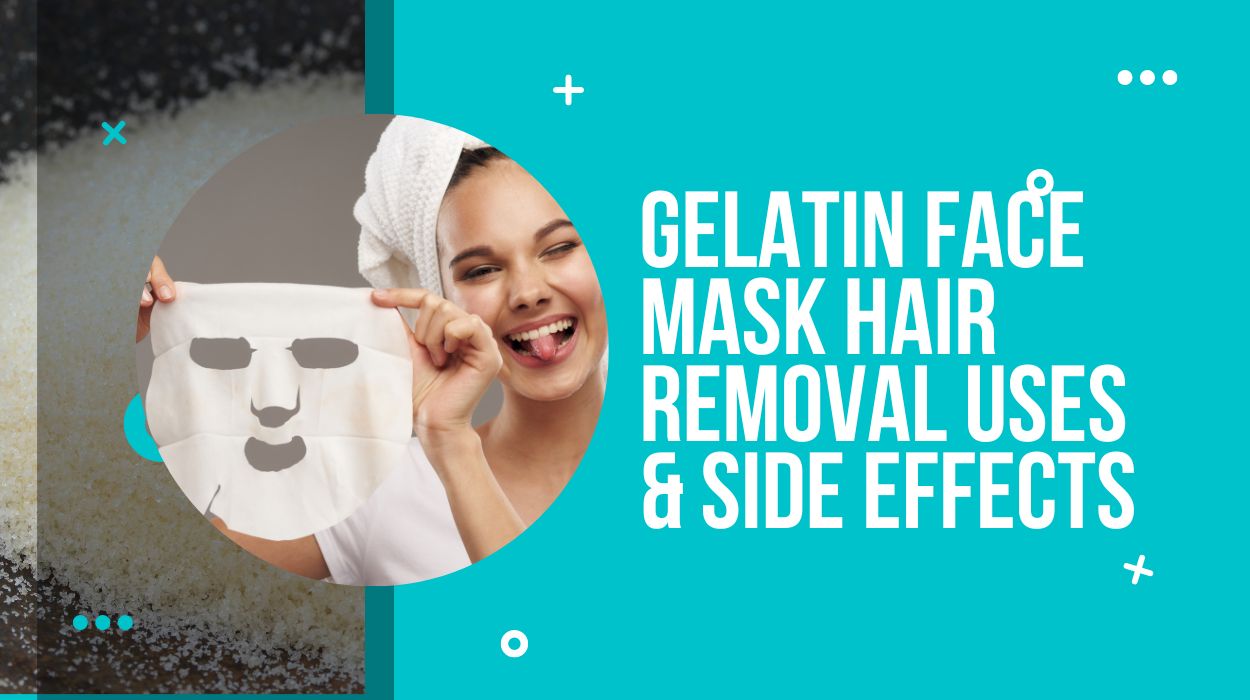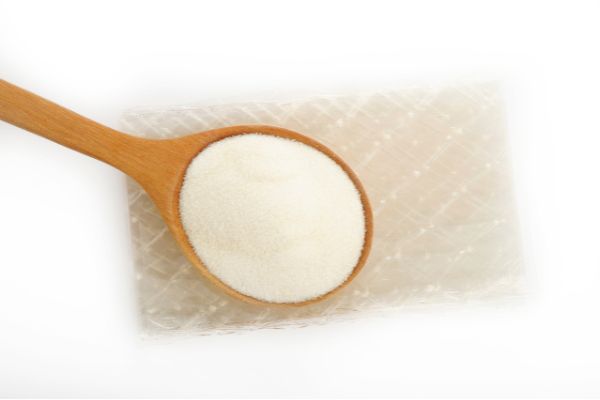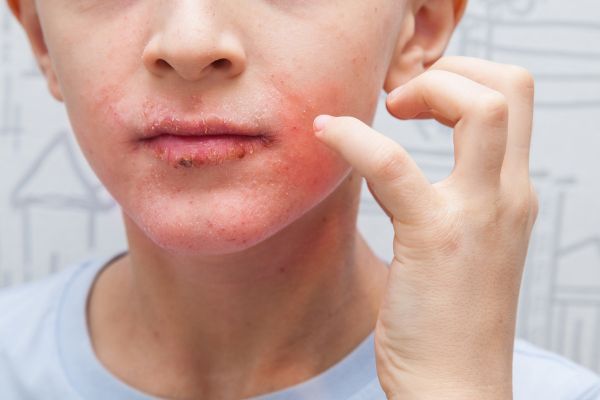Gelatin is a popular cosmetic product. It has several uses and is known for having anti-aging properties. Eager to know more? Well, you are in the right place as today, I’ll be reviewing a gelatin face mask and how it helped my skin.
Also, I’ll be talking about using a gelatin peel-off mask, its benefits, and its side effects. I will also share a quick DIY face mask recipe, so read on to find out!
What is Gelatin?
Gelatin is a colorless product that is obtained from cartilage taken from various parts of the animal body. It’s a natural protein (collagen) containing many amino acids and has a jelly-like texture.
However, gelatin becomes brittle upon drying, so it can be used for unclogging pores, blackheads, whiteheads, and facial hair.
Gelatin is widely used to make foods like jelly, candies, etc. When it comes to its role in beauty, gelatin is known to improve hair growth and anti-aging properties and boost collagen production in the skin.
You can find ready-made gelatin from the market or make it yourself.
Author’s Note: Gelatin is an animal protein product and thus is not vegetarian. Nevertheless, there is vegetarian gelatin available in the market. You can also try using agar jelly instead of gelatin obtained from algae.
DIY gelatin peel-off mask
You can make a gelatin peel-off mask with simple household ingredients at home. I’ll be sharing some of the best DIY recipes for you to try.
DIY gelatin mask recipe:
- Take about 1 teaspoon of gelatin and add to a bowl
- Add one teaspoon of lime juice to the bowl
- Then add one teaspoon of lavender oil to cover the smell of gelatin
- Mix all the ingredients well
- Keep the microwave-ready and heat this bowl for 15-20 seconds
- Apply this mask quickly as gelatin tends to dry fast
- Avoid applying this mask near the eyebrows or sensitive areas
- After 5 minutes, remove the mask
- Please do not keep this mask for long periods, or else it will be difficult to remove
If you do not have a microwave oven, then there are other ways you can moisten the gelatin. Instead of lime juice, simply add 1-2 teaspoons of hot milk.
Remember to make a nice thin layer and always do a patch test before putting it all over your face.
It may take time to peel off this mask in some scenarios completely. Do not panic or worry; try to be as gentle as possible while peeling this mask since it will pull out the facial hairs.
Gelatin mask for acne-prone skin
For folks with oily or acne-prone skin, I’ve got your back with a simple DIY peel-off mask recipe made for your skin type. For this you will require the following ingredients:
- Unflavoured gelatin
- Tea tree oil
- Honey
- Warm water
DIY recipe:
- Take a bowl and add gelatin powder to it and gently mix with water
- Microwave this mixture for 10 seconds or until the powder dissolves completely
- Let this mixture cool for a few minutes
- Before it starts thickening, add 2 drops of tea tree oil and honey to it. Mix it well
- Apply this mask and peel off after 15 minutes
Gelatin mask for dry skin
If you are a dry-skin type, then this recipe is for you! You will need the following ingredients:
- Unflavoured gelatin
- Almond oil
- Almond milk
- Rosewater
DIY recipe:
- Take a bowl and add gelatin powder to it and gently mix with almond milk
- Microwave this mixture for 10-15 seconds, and mix it until the gelatin dissolves
- Let t cool for some time, and add a little almond oil and rose water
- Mix it thoroughly so that all the ingredients blend well
- Apply this mask with a brush and leave it on for 15 minutes then peel it off.
Author’s Note: Before applying the peel-off mask, wash your face and pat dry it.
Side effects of gelatin
Gelatin may contain ingredients that can cause an allergic reaction in some people. Hence, it is essential to check beforehand if you are allergic to it.
Also, gelatin can attach to your skin tightly after drying up, which can be painful to remove if you have a lot of facial hair. Some people have used this same recipe, but it worsened their skin.
Perhaps they did not follow the steps and tips correctly. On the other hand, for some people, it did wonders and worked quite well. I don’t think it would be suitable for sensitive skin types.
From what I have researched, it can go either way for you. The key thing is to put a thin layer only. I’ll recommend doing so with the help of a brush and never let this mask over-dry.
Author’s Note: You can apply the mask with your fingers, too, but you will end up putting a thick layer instead of a thin one.
Overview of the gelatin mask on my skin
Now let’s look at this gelatin mask’s positive and negative points and rate it.
What I liked:
- It helps in removing blackheads effectively
- Unclogs dirty pores and exfoliates dead skin cells
- Removes the sebaceous filaments on my nose
- Makes the skin feel clean and light
- Makes your skin smooth
- Helped to remove tiny hairs
What I didn’t like:
- It wasn’t exactly painless to remove since I have a lot of facial hair; otherwise, it was alright to use
- It has a strong, pungent smell
- Dries up fast and sticks to the skin too tightly
Overall, I liked this gelatin face mask, but I wouldn’t recommend applying it to the whole face unless you have waxed it already, or it will be painful. It works similar to commercial pore removal masks, but gelatin exfoliates.
As a result, it’s best for oily and combination skin types that want to get rid of excess oil, dirt, and acne-causing bacteria. If you often get blackheads, then gelatin masks can be a lifesaver.
Author’s Note: Remember that gelatin dries up fast; hence, it will not be suitable for you if you have a dry skin type.
Is a gelatin mask a Biore pore strip?
By now, I’m sure I must have gotten a pretty good idea that this gelatin peeling mask is similar to a Biore pore strip.
These strips technically remove the sebaceous filament (accumulation of dead skin cells and sebum around a hair follicle), often mistaken for black or whiteheads. Though their appearance isn’t good, they are pretty normal.
So, removing them doesn’t make them go away. You will need to use exfoliators to reduce their occurrence.
Regardless, dermatologists are not so big of a fan of these blackheads removing or unclogging pore technique. What’s the reason, you ask? Frankly speaking, pore strips are painful methods to get rid of blackheads, and their effects do not last long.
In fact, they can expose your pores or, worse, make them larger. This is why skin experts recommend AHA (glycolic acid) and BHA (salicylic acid) based exfoliators to clean your pores and prevent those nasty-looking blackheads.
Moreover, dermatologists also endorse using retinol for acne prevention. If you look at the big picture, gelatin masks have the upper hand with their anti-aging and collagen-boosting properties compared to the commercial Biore strips.
Conclusion:
Although gelatin is a protein product known for its beneficial properties, such as skin rejuvenation, it doesn’t suit everyone. Using a gelatin face mask can help you get brighter and healthier skin since it unclogs your pores, blackheads, etc. However, it does not obliterate facial hair completely. Overall, a gelatin mask is a great way to get rid of blackheads and exfoliation effectively, but if you have lots of facial hair, then it would be best to apply a thin layer.






